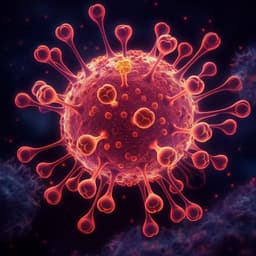
Medicine and Health
SARS-CoV-2 disease severity and transmission efficiency is increased for airborne compared to fomite exposure in Syrian hamsters
J. R. Port, C. K. Yinda, et al.
Discover groundbreaking research from Julia R. Port and colleagues detailing how SARS-CoV-2 is transmitted through various routes, including intranasal, aerosol, and fomite exposure. Each method leads to different disease outcomes, emphasizing the importance of understanding transmission dynamics as the virus evolves.
~3 min • Beginner • English
Related Publications
Explore these studies to deepen your understanding of the subject.







